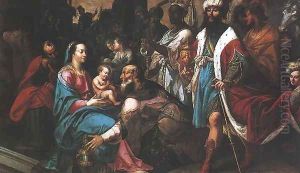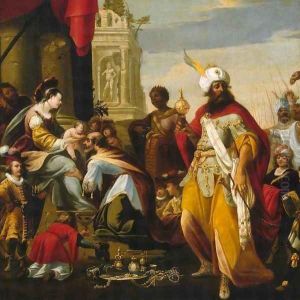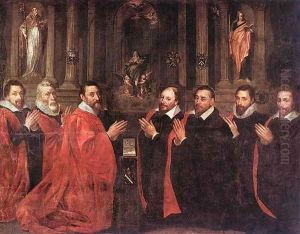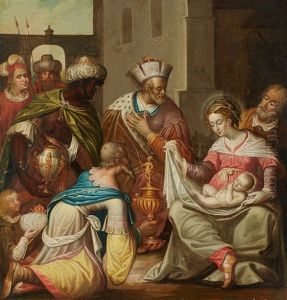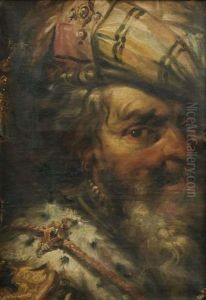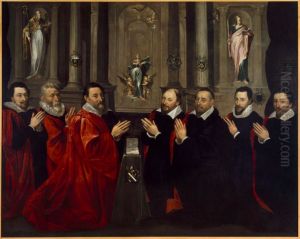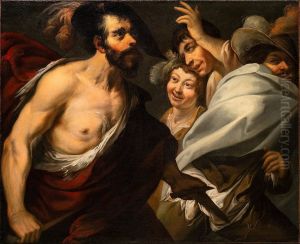Georges Lallemand (see Lallemant) Paintings
Georges Lallemand, also known as Georges Lallemant, was a French painter whose work is associated with the early 17th century Baroque period. Born around 1575, details of his early life are somewhat obscure, but he is believed to have been active in Paris by the start of the 1600s. Lallemand's oeuvre predominantly consists of religious subjects, reflecting the Counter-Reformation's influence on art during his time, which aimed to communicate religious themes with emotional intensity and dramatic use of light.
Lallemand's training and early influences are not well documented, but his style suggests that he was aware of the works of the Italian painters of the late 16th century, as well as the innovations brought about by Caravaggio, whose tenebrism and realism had a profound impact on many artists of the period. Lallemand's paintings are characterized by their meticulous execution, balanced compositions, and the sensitive use of color and light to evoke a spiritual atmosphere.
Despite a relatively successful career, Georges Lallemand did not attain the fame of some of his contemporaries, such as Georges de La Tour, with whom he is sometimes confused due to similarities in their first names and their shared mastery of chiaroscuro. Lallemand's work was, however, appreciated in his time, and he received commissions for altarpieces and decorative works for churches and religious institutions in and around Paris.
Lallemand's later work continued to explore religious themes but also included mythological subjects, demonstrating a versatility in handling different genres. Unfortunately, his career was cut short by his death in 1636. The body of his work that survives today is limited, and as a result, his contribution to the Baroque movement is not as well recognized as that of some of his peers. Nonetheless, his paintings stand as a testament to the rich artistic environment of early 17th century France and the influence of the Baroque style on French artists before the full flowering of the French Baroque under Louis XIV.
